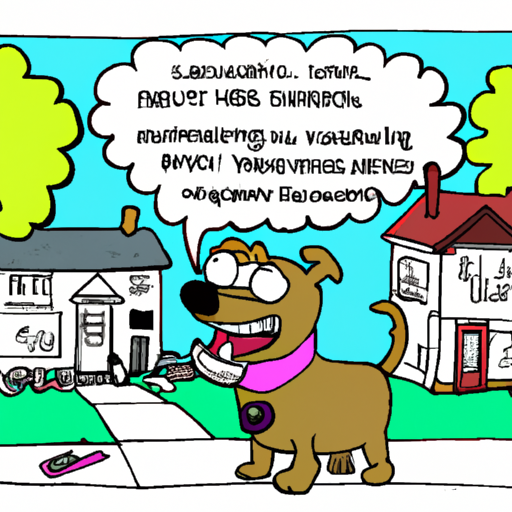Introduction
You love your dog, but at times, it seems like their incessant barking is driving you to the brink of insanity. Why is it that your furry friend seems to bark at everything? Is there a way to manage this behavior? This guide will provide you with the information and strategies you need to understand and address your dog’s barking.
Understanding Why Dogs Bark
Firstly, you must understand that barking is a normal behavior for dogs. They bark to communicate, to alert you of danger, to express their needs, and sometimes, simply out of boredom. Here are some common reasons for excessive barking:
- Territorial/Protective: When a person or an animal comes into an area your dog considers their territory, that often triggers excessive barking.
- Alarm/Fear: Some dogs bark at any noise or object that catches their attention or startles them.
- Boredom/Loneliness: Dogs are pack animals. Dogs left alone for long periods, whether in the house or in the yard, can become bored or sad and often will bark because they are unhappy.
- Greeting/Social: Dogs often bark when greeting people or other animals. It’s usually a happy bark, accompanied with tail wags and sometimes jumping.
- Attention-seeking: Dogs often bark when they want something, such as going outside, playing, or getting a treat.
- Separation anxiety/Distress: Dogs with separation anxiety often bark excessively when left alone.
Common Triggers for Barking
Understanding what triggers your dog’s barking is the first step in managing it. Here are some common triggers:
- Other dogs or animals
- People passing by
- Vehicles
- Loud noises
- Being left alone
- Playtime
- Mealtime
Managing Your Dog’s Barking
Now that you understand why and when your dog might be barking, let’s explore some strategies for managing this behavior. Remember, the goal isn’t to stop your dog from barking entirely, but to control the excessive and unnecessary barking.
Training Your Dog
Training your dog to understand when to bark and when to be quiet can be a powerful tool. Here are some steps you can follow:
- Remove or mitigate the trigger: If possible, remove the trigger. For example, if your dog barks at people passing by the window, close the curtains or move your dog to another room.
- Use a distraction: When your dog starts barking, distract them with a toy or treat.
- Use the ‘quiet’ command: When your dog starts barking, say ‘quiet’ in a calm, firm voice. When they stop barking, reward them with a treat or positive attention.
- Consistency is key: Be consistent with your training. If you let your dog bark sometimes but not others, they will get confused.
Seek Professional Help
If your dog’s barking continues to be a problem despite your best efforts, don’t hesitate to seek help. A professional dog trainer or a behaviorist can provide you with personalized strategies and techniques to manage your dog’s barking.
FAQ
Q: Is there a breed predisposed to bark more than others?
A: Yes, some breeds are more vocal than others. For instance, Terriers, Beagles, and Basset Hounds are known to be quite vocal.
Q: Can certain health issues cause excessive barking?
A: Yes, conditions such as dementia, pain, and hearing loss can increase barking. If your dog’s barking behavior changes suddenly, it’s best to consult with a veterinarian.
Q: Does punishment work for excessive barking?
A: Punishing a dog for barking can actually make the problem worse. It’s best to use positive reinforcement methods.
Q: How can I prevent my dog from barking at night?
A: Ensure your dog has plenty of exercise during the day to help them sleep at night. Also, consider using white noise or calming music to mask outside sounds that might cause barking.
Remember that patience and consistency are key when addressing your dog’s barking behavior. With understanding, time, and effort, you can help your dog become a quiet and happy member of your family.



